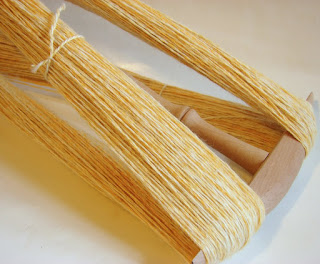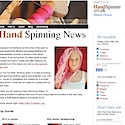 It's holiday time, but can you knit on the plane...?
It's holiday time, but can you knit on the plane...?I recently read this tip in Lion Brand's newsletter:
That tip is American, but there is much debate about this subject wherever you are in the world including here in the UK, see these debates on Folksy and UK Yahoo answers:
When traveling by airplane, I carry a printed copy of the rules that say that you're allowed to carry knitting needles in my carry-on. I have used it to get my knitting on board many an airplane! You can get this information from www.tsa.gov.
- Cynthia G.
http://forums.folksy.com/forums/6/topics/17001
http://uk.answers.yahoo.com/question/index?qid=20070702114341AA7aJlU
CAA provides a 'what can I carry' list - as usual it refers to knives, scissors and other sharp items, but not specifically knitting needles:
http://www.stanstedairport.com/assets/Internet/Heathrow/Heathrow%20downloads/Static%20files/DangerousGoodsOffice.pdf
The answer seems to depends on the airport.
Stanstead / Heathrow / Glasgow / Edinborough / Aberdeed / Southampton (BAA airports) - YES! I had to search for it, but there is an FAQ on this page which tells you unambiguously that "Knitting needles are allowed":
http://www.stanstedairport.com/portal/controller/dispatcher.jsp?CiID=21aeb8874d9b7210VgnVCM10000036821c0a____&ChID=750bb8874d9b7210VgnVCM10000036821c0a____&Ct=B2C_CT_GENERAL&CtID=448c6a4c7f1b0010VgnVCM200000357e120a____&ChPath=Home^Stansted^General^Airport+information^Stansted+security^Security+FAQs#7
Luton doesn't specifically mention them on its site, but they seem to be a little more strict than others (besides the usual "Pointed or bladed articles" they ban scissors from hand luggage with blades more than 3" rather than the more usual 6") so I guess not.
Manchester is a NO! - they're specifically banned from hand luggage. In fact they're so worried about our needles that they regard it as an offence to carry them on board:
http://www.manchesterairport.co.uk/manweb.nsf/Content/Departing
For other airports - check your airport's website.
Good advice is to put them in your check-in baggage if in doubt, or to have an SAE with you so that you can thread your work onto scrap yarn and post your needles back to yourself if it comes to that.










































